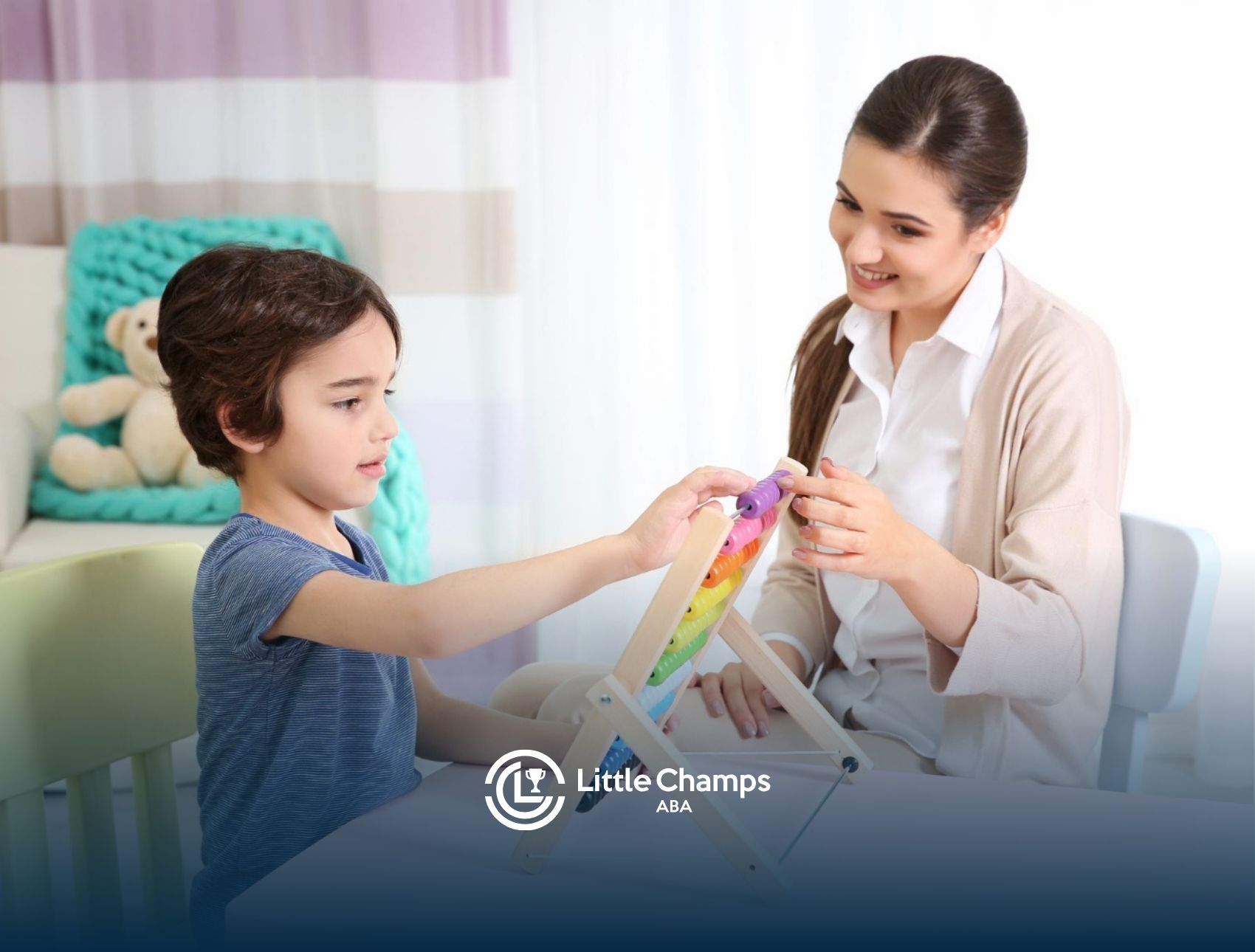
Choosing the right ABA therapy setting for your child is a big decision. Do you go with in-home therapy, where sessions happen in a familiar space, or opt for a clinic-based approach with structured routines and specialized resources? Both have their advantages, and what works best really depends on your child’s unique needs, personality, and learning style.
I know this decision can feel overwhelming, so let’s break it down and explore the key differences to help you make the best choice for your family.
Key Differences Between In-Home and Clinic-Based ABA Therapy
Where Does the Therapy Happen?
In-home ABA therapy takes place right in your home, with therapists working directly in your child’s everyday environment. This approach allows therapy to be seamlessly integrated into daily routines, helping your child develop and practice skills in real-life situations.
Clinic-based ABA therapy, on the other hand, happens in a structured setting designed specifically for therapy. Clinics are equipped with specialized tools and resources that can support a variety of skill-building exercises in a distraction-free environment.
So, if your child thrives in familiar surroundings, in-home therapy might be a great fit. But if they do better in a structured and routine-driven space, a clinic-based approach could be the way to go.
Comfort vs. Structure: Which Works Best?
In-Home ABA Therapy: Comfort and Familiarity
One of the biggest benefits of in-home therapy is that your child is in a space they already know and feel comfortable in. This can help reduce anxiety and make it easier for them to engage in therapy. Plus, therapists can observe behaviors in real-time within the context of daily life, which helps create highly personalized interventions.
Clinic-Based ABA Therapy: A Structured Learning Environment
For some children, structure is key. A clinic setting minimizes distractions and provides a controlled space where therapists can implement specific programs using specialized tools. If your child thrives on routine and benefits from a focused learning environment, a clinic may be the better option.
Bottom line? Some kids need familiarity, while others thrive with routine and structure. The best choice depends on how your child learns best.
Real-Life Skills vs. Specialized Resources
In-Home ABA Therapy: Building Skills in Everyday Life
Since therapy takes place at home, skills are learned in the same setting where they’ll actually be used. Whether it’s improving communication during mealtime or practicing social interactions with siblings, in-home therapy helps ensure that new skills translate directly into daily routines.
Clinic-Based ABA Therapy: Access to Specialized Tools
Clinics are designed with therapy in mind, meaning your child gets access to resources and materials that might not be available at home. From social groups that encourage peer interaction to tools that aid in skill development, a clinic setting can provide structured learning opportunities that complement home-based skills.
Socialization and Peer Interaction
In-Home ABA Therapy: One-on-One Focus
In-home therapy typically involves one-on-one sessions with a therapist, which allows for highly personalized attention. While this is great for individualized learning, social opportunities may be more limited unless additional arrangements are made, such as playdates or group activities.
Clinic-Based ABA Therapy: Built-in Social Opportunities
One of the biggest advantages of a clinic setting is the opportunity for children to interact with peers. Many clinics incorporate group activities that help build social skills, teamwork, and communication. If social development is a priority, a clinic may offer more structured peer interactions.
Which Option is Right for Your Child?
There’s no one-size-fits-all answer here. Some children thrive in the familiarity of home, while others do better in a structured clinic setting. The right choice depends on your child’s learning style, therapy goals, and what works best for your family’s schedule.
If you’re still unsure, don’t worry! At Precious Care ABA, we’re here to help. Our team of dedicated professionals will work with you to find the best fit for your child. Whether it’s in-home or clinic-based therapy, our goal is to provide high-quality, individualized ABA services that help your child grow and thrive.
Ready to Get Started?
Let’s find the best ABA therapy setting for your child together. Contact Precious Care ABA today to learn more about our in-home and clinic-based programs!
FAQs
Which is more effective: in-home or clinic-based ABA therapy?
Both settings can be effective, depending on the child’s needs. In-home therapy allows skills to be learned in a familiar environment, while clinic-based therapy provides a structured space with specialized resources.
Can a child receive both in-home or clinic-based ABA therapy?
Yes! Some families choose a hybrid approach, combining in-home therapy for real-life skill development and clinic-based sessions for structured interventions.
How do I decide between in-home or clinic-based ABA therapy?
Consider factors like your child’s learning style, the need for structure vs. flexibility, family involvement, and access to specialized tools. A consultation with an ABA provider can help guide your decision.
Sources:
- https://www.appliedbehavioranalysisedu.org/in-home-care/
- https://pmc.ncbi.nlm.nih.gov/articles/PMC5621997/
- https://bmcpsychiatry.biomedcentral.com/articles/10.1186/s12888-022-04412-1
- https://link.springer.com/article/10.1007/BF01538540
- https://www.forbes.com/sites/forbesbooksauthors/2019/05/24/home-based-vs-center-based-services-for-autism/


